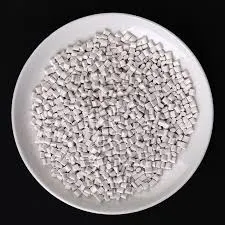Understanding Sulphamic Acid Powder Properties, Uses, and Safety
Sulphamic acid, also known as sulfamic acid, is a white crystalline solid with the chemical formula H3NSO3. It is an important chemical compound that finds extensive applications across various industries. In this article, we will explore the properties, uses, and safety considerations of sulphamic acid powder, highlighting its significance in both industrial and domestic settings.
Properties of Sulphamic Acid Powder
Sulphamic acid powder is characterized by its high solubility in water and moderate solubility in alcohols. It exhibits a strong acidic nature with a pH value that can range from 1-2 in its aqueous solution. This white crystalline powder typically has a melting point of around 205°C and an amine and sulfonic acid functional group, making it a unique compound with specific reactivity.
One of the notable properties of sulphamic acid is its ability to act as a weak acid in chemical reactions. This means it can donate protons (H⁺ ions) but less aggressively than stronger acids. Additionally, sulphamic acid is stable under normal conditions, making it easy to handle and store. It is non-volatile, which reduces the risk of vapor exposure, an important consideration for safety in industrial applications.
Applications of Sulphamic Acid Powder
Sulphamic acid powder has a wide range of applications due to its unique chemical properties. Here are some of the most common uses
1. Descaling Agent One of the primary uses of sulphamic acid is as a descaling agent. It effectively removes limescale and mineral deposits from various surfaces, including heat exchangers, boilers, and cooling towers. This makes it valuable in industries such as manufacturing, food processing, and water treatment.
2. Cleaning Agents Alongside its descaling properties, sulphamic acid is commonly found in cleaning agents for household and industrial cleaning products. Its ability to dissolve stubborn stains, rust, and mineral deposits makes it a go-to ingredient in many formulations.
sulphamic acid powder

3. pH Regulator Sulphamic acid is utilized to control pH levels in swimming pools, aquariums, and industrial processes. Its role as a pH regulator helps maintain the correct acidity and ensures optimal conditions for various chemical reactions.
4. Fertilizers In the agricultural sector, sulphamic acid can act as a nitrogen source for fertilizers. It is often used in formulations that promote plant growth and development by providing essential nutrients.
5. Textiles and Dyes The textile industry employs sulphamic acid in dyeing processes, where it helps fix dyes onto fabrics, ensuring color fastness and vibrancy. It is also used in textile processing to improve the quality of fabric finishes.
6. Synthesizing Chemicals Sulphamic acid serves as an important intermediary in the synthesis of various chemicals, including herbicides and pharmaceuticals. Its reactive properties allow it to participate in various organic reactions, contributing significantly to chemical manufacturing.
Safety Considerations
While sulphamic acid is a versatile and useful compound, it is essential to handle it with caution due to its acidic nature. Prolonged exposure to sulphamic acid can lead to skin and eye irritation; therefore, personal protective equipment (PPE) such as gloves, goggles, and face masks should be worn during handling. It is also advisable to work in well-ventilated areas to minimize inhalation risks.
In case of accidental contact with skin or eyes, it is crucial to rinse the affected area with plenty of water for at least 15 minutes and seek medical attention if necessary. Additionally, it is important to store sulphamic acid powder in a cool, dry place away from incompatible substances, such as strong bases, to prevent potentially hazardous reactions.
Conclusion
Sulphamic acid powder is a vital chemical with a multitude of applications ranging from descaling agents and cleaning products to fertilizers and chemical synthesis. Its unique properties and effectiveness make it a valuable resource in various industries. However, safety precautions must be observed when handling this compound to ensure the well-being of individuals and the environment. As research continues, the potential uses of sulphamic acid may expand, further solidifying its significance in our daily lives and industrial processes.

